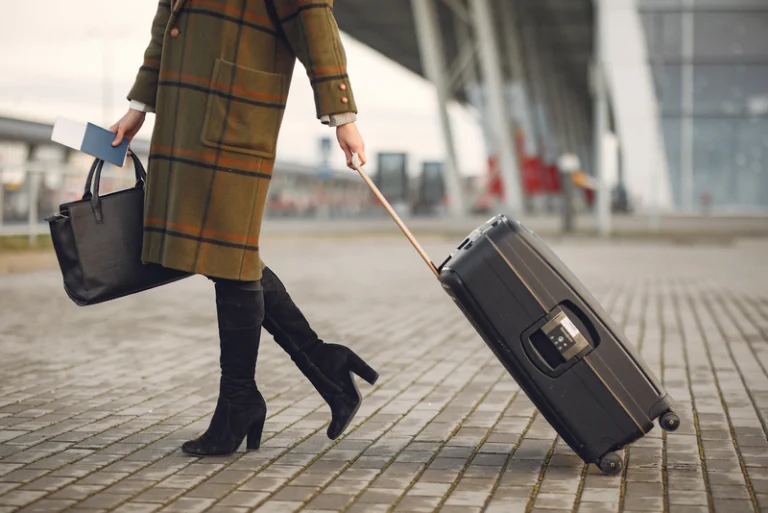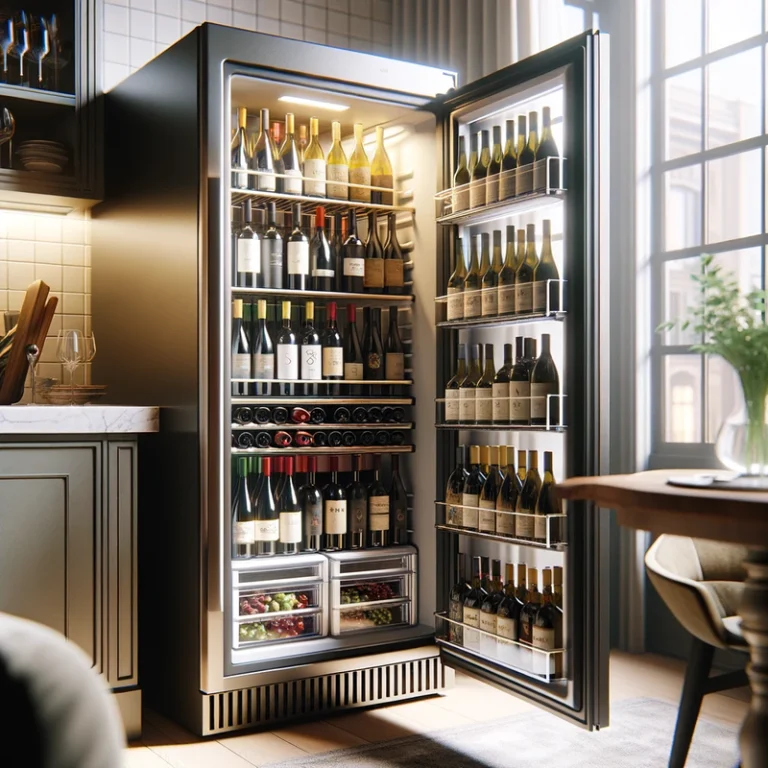Ever tried to move a cherished wine collection across the country? If you have, then you know it’s not as simple as packing your favorite jeans. This task can be daunting – like trying to transport an orchestra without missing a beat.
Imagine being able to protect each bottle from temperature changes, vibration and shock damage. Can you feel the relief of having insurance coverage for your valuable collection?
You’re about to embark on this journey with us, where we’ll guide you every step of the way – right from selecting the best packaging materials, deciding between DIY or professional movers, post-move care tips for your precious cargo and even learnings from real-life successful moves.
Get ready to take off on a voyage that will show you how to move your valuable bottles securely and effectively! Fasten your seatbelts, it’s time for an illuminating journey!
Understanding the Challenges of Moving Wine Across Country
Moving wine across the country is no simple task. It’s like running a marathon with a delicate, crystal trophy – one misstep and your prized possession could be in pieces.
The first challenge you might face is temperature control. Like that fancy chocolate bar you love, wine doesn’t do well under extreme temperatures (Wine Spectator). Too hot or too cold can alter its taste drastically.
Beyond this, transportation poses another hurdle. Picture yourself trying to move a castle made of playing cards – each bump or jolt during transit risks damage to your valuable bottles.
Packaging Perils
Selecting suitable packaging materials for your precious cargo is essential but tricky. Think about choosing between bubble wrap and packing peanuts when wrapping up an antique vase—it needs enough cushioning without stifling it entirely.
Caring for Your Collection Post-Move
Once safely moved, caring for your collection post-move presents its own set of challenges. Imagine rehousing tropical fish into new tanks—you’ll want conditions just right so they can continue thriving.
With so many hurdles, it’s no wonder why wine lovers often turn to professional services like The Wine Mover for help. But armed with knowledge and preparation, you can overcome these challenges successfully.
Selecting the Right Packaging Materials for Wine Bottles

Just like you wouldn’t use a paper bag to transport your grandmother’s precious china, you shouldn’t skimp on packing materials when moving wine. Different types of packaging are designed to give optimal protection during transit.
Pulp shippers, made from molded fiber pulp and commonly used in the wine industry, cradle each bottle individually. This material is both shock-absorbent and environmentally friendly—just what Mother Nature ordered. U-Haul offers a variety of sizes suitable for different quantities.
Step-by-Step Guide to Packing Wine Bottles for a Move

Packing your wine bottles correctly is like dressing them in armor. It’s all about protection and ensuring they survive the journey unscathed. Here’s how you can do it.
Selecting Your Packaging Materials
Start by getting hold of some sturdy, purpose-built wine shipping boxes. These have individual slots for each 750 mL bottle, offering more protection than standard moving boxes. The Wine Mover provides all the packing materials (boxes, dividers, and packing tape) required for wine moving.
As long as the bottles are packed properly, you won’t need to bubble wrap or add foam sleeves to each bottle.
Placing Bottles in the Box
Place each bottle in it’s designated compartments within the cardboard box—like settling books onto a shelf one after another—but make sure not too tight nor too loose.
Repeat until all compartments are filled up. This ensures no unwanted movement during transit; just imagine trying to keep balance while standing on a crowded bus.
Fitting Lids and Sealing Boxes
Last but definitely not least: once everything fits perfectly inside your armored vehicle—a.k.a., your shipping box—it’s time to seal it up. Just like how you would close a book after reading, place the lid on top and use strong packing tape to secure it firmly in place.
And voila. Your wine bottles are now ready for their cross-country journey.
Ensure each box of wine bottles is properly labled and is visible for loading, as this will indicate to movers that they need extra care. This way, movers can see that they’re handling fragile items which need a little more care.
Key Takeaway:
Begin by getting strong wine shipping boxes, similar to armoring your wine bottles. The bottles need to fit snugly within the box compartments but without too much pressure. And don’t forget – finish up by securing everything firmly with robust packing tape. With these steps taken care of, your wines are all set and ready for their journey.
Choosing Between DIY and Professional Wine Moving Services

Moving a wine collection across the country is no small feat. You might be weighing your options: Should you do it yourself or hire professionals? Both have their merits.
Going DIY
Know that if you opt to go it alone, you’ll have complete authority over how your valuable containers are managed. But remember, packing materials can add up and the time spent may not justify cost savings.
Hiring Pros
The thought of handing over your prized wines to strangers might give you pause. However, professional wine moving services like The Wine Mover, offer peace of mind with white-glove handling and climate-controlled transport – ensuring every bottle arrives in perfect condition.
Pricing Considerations
Hiring pros may cost more than doing it yourself, but when you factor in the expense of packaging materials, transport fees, insurance and potential loss from improperly packed bottles; using a professional could end up being more affordable. Yet when factoring in costs for packaging materials, transportation fees, insurance coverage plus potential loss from improperly packed bottles; pros often end up being more economical.
- DIY Cost: Materials + Transport Fees + Time Spent + Risk Factor (Potential Loss).
- Professional Service Cost: Fixed Fee (including Insurance Coverage).
This makes pro services an attractive option especially if dealing with high-value collections where losses could run into thousands of dollars.
Insurance Considerations When Moving Wine Across Country
Moving your prized wine collection across the country can feel like a high-stakes gamble. Don’t take a chance when it comes to protecting your investment; specialized insurance coverage from knowledgeable insurers is the way to go.
First off, you should know that standard moving insurance often doesn’t cover specialty items like wine collections. So you’ll want to consider getting specialized coverage from insurers who understand vino and its value.
You might be asking, “But how much coverage do I need?” A good rule of thumb is this: If losing any bottle would make you cry real tears (or even fake ones), insure it.
Valuing Your Collection for Insurance Purposes
To start with the insurance process, get an appraisal of your collection by a certified professional. This gives both you and the insurer clarity about what’s at stake during transport.
The cost of an official wine appraisal may seem steep upfront but think about peace-of-mind as priceless luggage on this cross-country journey.
Finding The Right Insurer For Your Wine Collection
Dig around for insurance providers specializing in fine wines – yes they exist. They’re usually more adept at handling claims related to things like breakage or spoilage due to improper storage conditions en route.
Here’s what to look for:
- Specialized in insuring fine wine
- No minimum shipment value
- Protection against breakage and temperature fluctuations resulting in cork push or seepage
- Competitive rates
- Instant coverage
Understand What Your Policy Covers
The fine print matters. Does your policy cover damage during transport, or just while in storage? Is wine spoilage due to temperature changes covered?
Remember that any form of protection is preferable to having none. So do the legwork now and sip stress-free later.
Post-Move Care for Your Wine Collection

Relocating your wine collection to another area of the country may be a complicated process, but it doesn’t finish once you arrive at your new residence. Proper post-move care is crucial to maintain the quality of your wines.
The Wine Mover works with wine storage facilities across the country, so if you don’t have a residence yet or are building your own wine cellar, we can help you find a professional wine storage option. We provide up to 30 days of storage included in all moves.
Unpacking Your Wine Bottles
The first step after arrival is unpacking. Be gentle, as rough handling might disturb any sediment in older bottles. It’s best to keep them still for at least 7 days before opening.
Finding an Ideal Storage Space
Your new storage space should replicate ideal cellar conditions as closely as possible. Look for areas with stable temperatures around 55°F and relative humidity between 50% -80%. Avoid locations with direct sunlight or vibration from household appliances like washing machines; a kitchen is also a bad space to keep wine that is not in a wine cooler or cellar.
Verifying Your Collection Post-Move
It’s important to take inventory of your collection once moved as advised by Wine Spectator. This helps track bottle conditions and identify if any have been affected during transit.
Our favorite cellar tracking software is CellarTracker, which is available via webbrowser, iPhone, or Android app.
Laying Down Wines That Need Resting
If some bottles appear disturbed, they may need more rest time—particularly true for reds that throw a lot of sediment or vintage ports.
TIP: Remember that every move has its challenges, but The Wine Mover offers specialized help tailored specifically towards maintaining the integrity and value of wine collections during relocations.
Remember these tips next time you plan on moving your precious liquid assets.
Case Study: Successful Wine Moves Across Country
But, taking tips from those who’ve had success with this kind of move can help reduce the risk. Let’s explore some real-life examples.
The Florida-to-California
A wine enthusiast recently faced the daunting task of relocating a 4,000-bottle collection from Florida to California. With the collection dispersed across three storage facilities and an inventory that wasn’t up-to-date, they sought the expertise of The Wine Mover.
Impressed by the company’s swift and detailed proposal, the collector felt confident to proceed with them. The move was executed flawlessly—on schedule, within the agreed budget, and without any damage to the precious cargo. Given the success of this experience, the collector would unequivocally choose The Wine Mover for any future relocations.
Conclusion
It’s an art, a science and a bit of legal navigation all rolled into one.
You’ve now learned how to select sturdy packaging materials that shield your precious bottles from shocks and temperature changes. You’ve weighed up the pros and cons of DIY versus professional moving services – knowledge that can save you both time and potential heartbreak.
Understanding insurance considerations for such moves is another feather in your cap. Remember, it’s not paranoia if they’re really after your Cabernet Sauvignon!
The complex web of state laws around transporting alcohol? You’ve got that covered too. And when it comes to post-move care for your collection, you’re prepared like never before.
All this knowledge arms you with what you need on how to move wine across country safely – so go forth with confidence! Here’s to successful transitions…and perfect preservation!
FAQs in Relation to How to Move Wine Across Country
How do you pack wine bottles for cross-country moves?
Pack each bottle in styrofoam or bubble wrap, and place it upright in a sturdy box. Make sure the bottles don’t jostle.
How much does it cost to ship wine across the country?
The shipping costs can range from per case depending on the distance and weight.
How do you transport large quantities of wine?
You can use professional movers who specialize in moving wines. They have climate-controlled trucks to maintain optimal conditions.
How do you keep wine cold when transporting it?
To keep your wine cool during transit, The Wine Mover only uses refrigerated vans and trucks to ensure a consistent temperature. What are some wine moving tips?
- Temperature Control: Wine is sensitive to severe temperature fluctuations. If you’re moving a long distance, consider a refrigerationed moving option to prevent spoilage.
- Inventory Your Collection: Make a detailed list of your wines, including their value and any special handling notes. This will also be helpful for insurance purposes.
- Proper Packaging: Use specialized wine boxes and inserts that are designed to keep bottles secure. If these aren’t available, use sturdy boxes and separate bottles with bubble wrap or packing paper.
- Horizontal Position: Keep corked wine bottles horizontal during the move to keep the corks moist, preventing air from entering the bottles and spoiling the wine.
- Insurance: Check with your insurance provider to ensure your collection is covered during the move. If not, you may want to purchase additional insurance from the carrier.
- Avoid Shaking: Too much movement can disturb the sediments in wine, potentially affecting flavor and quality. Ensure the moving process is as smooth as possible.
- Label Boxes: Clearly mark the boxes as fragile and indicate which side should face up. This will help movers handle your wine with care.
- Consider Professional Movers: If you have an extensive or particularly valuable collection, it might be worth hiring a professional service that specializes in moving wine.
- Timing Your Move: If possible, avoid moving wine in extreme weather conditions. Spring or fall typically offer the most temperate conditions.
- Immediate Unpacking: Once at your new home, prioritize unpacking your wine collection to get it into a stable environment as soon as possible.
- Let it Rest: After a move, give your wine some time to settle before opening it. The vibration and movement can affect the wine, so a rest period allows it to stabilize.
- Storage Solution: Set up your wine storage solution promptly upon arriving. Whether it’s a wine fridge, cellar, or a cool, dark space, getting your wine into proper storage is critical. We would be happy to connect you with one of our processional storage partners if needed.







